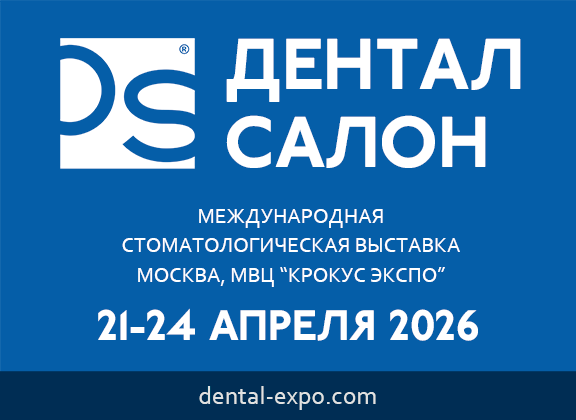DOI:
10.37988/1811-153X_2024_2_150The therapy of functional disorders of the masticatory organ using computer technology: a case report
Downloads
Abstract
The prevalence of tooth wear among the Russian population is steadily increasing and, according to various authors, reaches 84%. Various clinical manifestations of the disease (pain and tension of the masticatory muscles, clicking and crepitus in the TMJ, lower jaw lock, reducing the interalveolar height and the lower third of the face), the complexity of diagnosis and a large percentage of unsuccessful treatment outcomes require the search for new therapeutic resources, among which digital technologies are becoming the most in demand. An extract from the medical history of patient K., 42 years old, whose orthodontic treatment led to the appearance of functional disorders of the masticatory organ, is presented. At the stage of the orthodontic treatment hypertension of masticatory muscles and clicking in the TMJ appeared, and at the end of the therapy diastema appeared in the area of 1.1 and 2.1 teeth as well as gingival recession in the area of 3.1 teeth. These symptoms caused the patient to start a new dental treatment, which was carried out using digital methods of functional diagnostics (obtaining the digital impressions, modeling and 3D printing of the gnathometer, determining of the lower jaw therapeutic position and checking the condyle position using computed tomography), which made it possible to achieve complete elimination of functional disorders of the masticatory organ.Conclusions.
Computer technologies allow to perform the competent diagnosis and treatment, as well as monitoring the position of the lower jaw at all stages of complex rehabilitation, which ultimately ensures a successful outcome of treatment in the long term.
Key words:
tooth wear, temporomandibular joint and masticatory muscles dysfunction, digital diagnostics and therapeutics in dentistryFor Citation
[1]
Bulycheva E.A., Bulycheva D.S. The therapy of functional disorders of the masticatory organ using computer technology: a case report. Clinical Dentistry (Russia). 2024; 27 (2): 150—156. DOI: 10.37988/1811-153X_2024_2_150
References
- Badavannavar A.N., Ajari S., Nayak K.U.S., Khijmatgar S. Abfraction: Etiopathogenesis, clinical aspect, and diagnostic-treatment modalities: A review. Indian J Dent Res. 2020; 31 (2): 305—311. PMID: 32436913
- Voityatzkaya I.V., Tsimbalistov A.V. Reduced occlusion syndrom. Head and Neck. 2017; 3: 46—50 (In Russian). eLIBRARY ID: 35058552
- Koretskaya E.A., Kalmin O.V., Zyul‘kina L.A., Ivanov P.V. Characteristics of elasticity of solid tissue of teeth (literature review). University Proceedings. Volga region. Medical sciences. 2018; 3 (47): 141—156 (In Russian). eLIBRARY ID: 37102847
- Trezubov V.N., Bulycheva E.A., Trezubov V.V., Bulycheva D.S. Treatment of patients with temporomandibular joint and masticatory muscles disorders: clinical recommendations. Moscow: GEOTAR-Media, 2021. Pp. 12—25.
- Goldstein G., Andrawis M., Choi M., Wiens J., Janal M.N. A survey to determine agreement regarding the definition of centric relation. J Prosthet Dent. 2017; 117 (3): 426—429. PMID: 27765398
- Wiens J.P., Goldstein G.R., Andrawis M., Choi M., Priebe J.W. Defining centric relation. J Prosthet Dent. 2018; 120 (1): 114—122. PMID: 29526300
- Kandasamy S., Greene C.S., Obrez A. An evidence-based evaluation of the concept of centric relation in the 21st century. Quintessence Int. 2018; 49 (9): 755—760. PMID: 30202837
- Calamita M., Coachman C., Sesma N., Kois J. Occlusal vertical dimension: treatment planning decisions and management considerations. Int J Esthet Dent. 2019; 14 (2): 166—181. PMID: 31061997
- Rajapakse S., Ahmed N., Sidebottom A.J. Current thinking about the management of dysfunction of the temporomandibular joint: a review. Br J Oral Maxillofac Surg. 2017; 55 (4): 351—356. PMID: 28341275
- van der Zande M.M., Gorter R.C., Bruers J.J.M., Aartman I.H.A., Wismeijer D. Dentists‘ opinions on using digital technologies in dental practice. Community Dent Oral Epidemiol. 2018; 46 (2): 143—153. PMID: 28983942
- Rozov R.A., Trezubov V.N., Urakov A.L. Digital workflow for reconstructing the biomechanics of the masticatory apparatus in implant-supported prosthetics in edentulous patients. Russian Journal of Biomechanics. 2022; 3: 105—115 (In Russian). eLIBRARY ID: 50279568
- Postnikov M.A., Bulycheva D.S., Ignat‘eva A.A., Bulycheva E.A. Protocols of digital diagnostics in patients with reduced lower third of the face. Clinical Dentistry (Russia). 2021; 1 (97): 108—113 (In Russian). eLIBRARY ID: 44847637
Downloads
Received
February 8, 2024
Accepted
May 30, 2024
Published on
June 28, 2024










